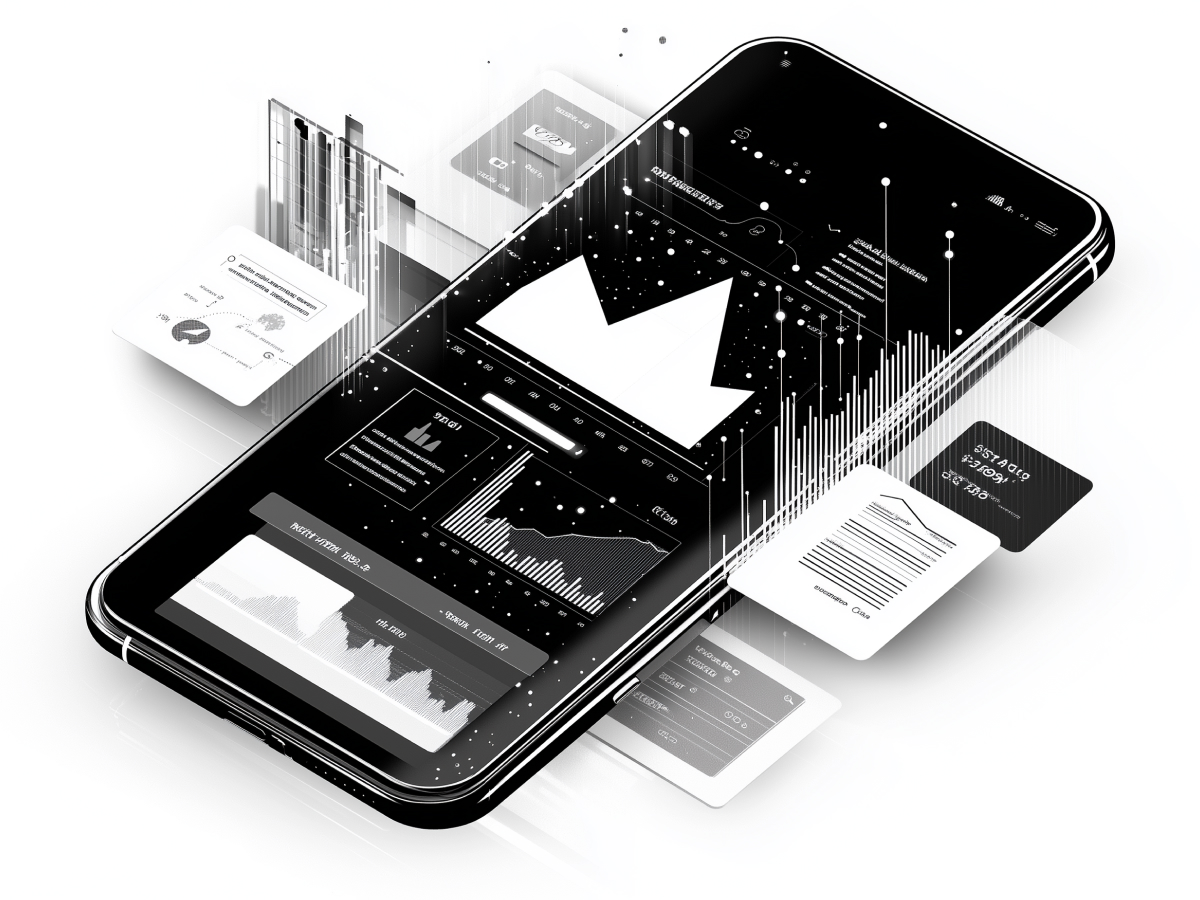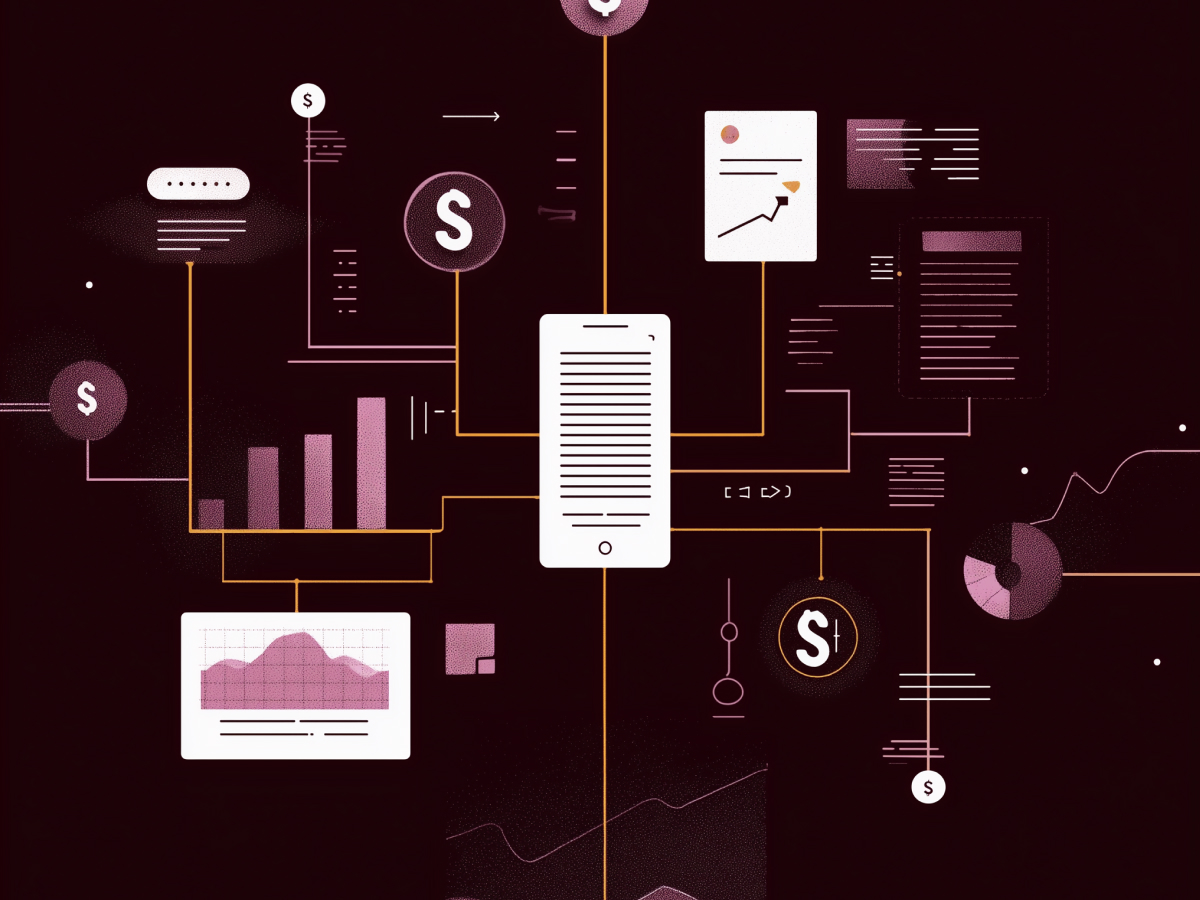Mobile apps have evolved from engagement tools into direct sales platforms
Mobile apps are no longer support channels. They’re now core revenue engines. In the early days, companies used apps mainly to drive awareness, tell their brand story, or build customer loyalty over time. That was enough when digital commerce wasn’t the dominant force. But that phase is over.
Consumer behavior has shifted. People expect friction-free digital experiences, buying, browsing, and checking out, all from their phones. Apps need to move beyond content and loyalty gimmicks. They need to convert. Your users don’t want to hunt for pricing, scroll endlessly, or jump through hoops to complete a purchase. Give them direct access. Make the transaction easy. Eliminate delay.
This shift is driven by the demand for speed and utility. High-performance mobile experiences now act as conversions machines, not just content delivery platforms. When designed well, they influence buying behavior significantly. High-performing apps don’t distract. They drive action.
For organizations still thinking of apps as supplementary or branding channels, it’s time to reassess strategy. Optimize the full mobile journey, from opening the app to completing a transaction. That streamlining is where revenue scales fastest.
Mobile usage has made this transition urgent. Mobile devices account for over 70% of eCommerce traffic. That statistic alone forces us to rethink priorities. If your mobile experience isn’t ready to convert traffic into actual revenue, you’re missing the point, and the opportunity.
UX audits are critical to identifying and resolving conversion barriers in mobile apps
A UX audit isn’t optional anymore. It’s a core business function. It tells you where users get stuck, frustrated, or drop off. It also tells you how to fix it. If your app generates traffic but conversion rates stay flat, or worse, decline, there’s signal in that noise, and a UX audit pulls it forward.
You don’t make guesses in high-stakes engineering. Don’t guess here either. UX audits remove opinion from the process. Instead, you’re making decisions based on behavior, analytics, and reality. Using techniques like heuristic evaluations and cognitive walkthroughs, teams can flag inconsistent design flows, unnecessary friction in checkouts, or unclear navigation. The result is a clean understanding of what needs fixing, and why users walked away in the first place.
This isn’t about making nice-looking apps. It’s about reducing user drop-off at every major touchpoint. That could be poor thumb-navigation design, confusing product categorization, or CTA buttons users don’t even notice. Customers are impatient. If your interface makes them hesitate, even briefly, they’ll move on, to your competitors.
For C-level leadership, this is a strategic move. Regular UX audits help you iterate faster and align your product experience with real user expectations. They’re short cycles with high impact. Think of them as system diagnostics. Minor changes, streamlined checkouts, shortened user paths, can open up serious revenue opportunities.
You don’t need complex tools to start. Just structured observation. Once the data shows you where the drop-offs occur, the path to solutions is straightforward. A small investment here leads to bigger gains across acquisition, retention, and revenue. Ignore it, and you’re leaving money on the table, and talent guessing your next move.
Market dynamics and user behavior trends are driving the demand for refined UX in mobile apps
The market has changed. Consumer expectations aren’t static, they’re accelerating. Users expect fast, usable, and simplified digital journeys. In eCommerce, mobile traffic has already surpassed desktop by a wide margin. Mobile devices contribute over 70% of total traffic. That’s not a trend, that’s the market telling you where the consumer is.
With this level of traffic, improving the mobile user experience is a baseline requirement. Today’s users won’t tolerate clunky flows. If they can’t browse or buy quickly, they move on. The competition is a single tap away. Convenience wins.
C-suite leaders must understand that KPIs like session duration or impressions are less meaningful if the UX isn’t contributing directly to conversions. Success is no longer about engagement metrics alone. It’s about whether a user completes the action your platform was designed to support.
This shift is a response to both user behavior and competitive pressure. The bar has been raised. Fast-growing companies are driving UX change aggressively. Your organization needs to move with similar urgency, or risk falling behind. Improving the user journey improves bottom-line results. And in most cases, these changes don’t require radical product rebuilds. They require executive prioritization, focused iteration, and clarity on user needs.
Leadership must look at UX not as a design initiative, but as a primary driver of digital sales efficiency.
Key focus areas in UX audits directly correlate with increased conversion rates
UX audits aren’t about aesthetics, they’re about revenue assurance. When implemented properly, audits expose UX-specific breakpoints that cause users to abandon their journey. These include overlong navigation paths, unclear CTAs, cluttered product layouts, and friction-ridden checkouts. Every small obstacle degrades the chances of conversion.
When a user cannot easily find a product, scroll through categories, or understand the pricing and shipping process, they hesitate. That hesitation impacts bottom-line performance. UX audits allow teams to spot these moments with structured clarity. Navigation must be seamless, users should reach key pages in three steps or fewer. Checkout flows must eliminate delays and irrelevant clicks. Visual hierarchy must present priorities clearly. Minor inefficiencies, when repeated at scale, erode your conversion rate.
For executive leadership, these findings support strategic prioritization. The audit isn’t just tactical feedback for the design team, it’s operational intelligence for decision-makers.
This is where high-performing organizations differ. They don’t just review metrics, they dissect the user’s path and remove friction before it becomes a revenue leak. Whether it’s adjusting the placement of a CTA button or tightening scroll logic, these refinements compound over time.
Prioritize frequent UX evaluations. They not only uncover usability obstacles, but allow for proactive alignment between product performance and commercial targets. Ignore them, and you risk stagnation. Use them, and you optimize for velocity.
No complex process. Just actionable insight driven by user behavior, and a willingness to iterate fast.
UX research and testing methods enable ongoing improvements that drive revenue growth
Progress depends on iteration, and iteration demands data. If you’re not consistently observing user behavior, you’re operating on assumptions. UX research strategies, like heatmaps, behavioral tracking, A/B testing, and lean testing, give your team real visibility into how users interact with your app. You get evidence, not opinion.
Heatmaps show where users focus. Behavior tracking identifies where they stall or exit. A/B tests give you direct performance comparisons between two design decisions. Cognitive walkthroughs and heuristic evaluations expose blind spots in user pathways. These aren’t academic tools. They are practical methods for discovering friction and increasing flow.
When properly applied, these methods create continuous improvement. That benefits both user experience and commercial performance. Iteration isn’t random, you’re solving known problems with specific changes that you can measure. Over time, these changes reduce drop-offs, shorten user paths, and raise conversion rates.
For business leaders, the takeaway is clear. Invest in cold hard feedback. Something as simple as changing a button label or repositioning a price tag can improve sales, when the decision is based on insight, not assumptions.
Build structures that support this cycle: test, measure, refine. It secures long-term improvement. When user expectations shift, you won’t fall behind, you’ll respond with clarity and speed. That’s how you stay relevant, and ahead.
Optimizing user flows enhances conversions by simplifying the digital path to purchase
If your app’s user flow is unclear, you lose users. The longer it takes to navigate from entry point to conversion, the more likely someone exits before buying. Optimized user flows remove hesitation by creating a direct, logical path between intent and action.
This doesn’t mean reducing functionality, it means organizing it with purpose. Every screen, every step has a role. Redundant prompts, unclear labels, and inconsistent transitions lengthen the user’s path and erode patience. Optimizing flows means clarifying transitions, aligning CTAs with intent, and minimizing surface-level noise.
Understanding your user personas helps here. You’re not building one universal path, you’re optimizing specific flows for specific user groups. A frequent buyer doesn’t need the same process as a new user. Segment paths accordingly so the experience matches the user’s intent.
Executives should see this as a margin opportunity. Improved user flow speeds up decision-making, reduces bounce rates, and increases successful checkouts. Faster flows also lower customer service requests and support loads, reducing operational drag.
This is a structural gain. Well-optimized flows remove inefficiencies that directly impact performance. And once mapped correctly, they scale without adding complexity.
Get the pathways right, and conversion efficiency rises across all user segments. It’s design work with long-term compounding impact.
Streamlined app navigation accelerates decision-making and increases user engagement
Navigation is a performance factor. If users can’t find what they came for, they’ll leave. Fast. Clean navigation supports faster decisions, lowers friction, and keeps users moving toward conversion. That’s not just a usability upgrade, it’s a revenue optimization.
When you audit navigation, focus on clarity and reachability. Ensure key screens, product listings, search, cart, are accessible within three taps. Use visible, clear menu labels. Discard hidden actions or niche icons that force people to guess. Every second a user spends figuring out where to go is a second lost from decision-making.
Mobile ergonomics also matter. Interfaces should prioritize tap zones and motion behaviors common to how users hold and operate their phones. Prioritize thumb-accessible areas. Reduce reach, and you reduce dropout.
Executive teams should be tracking how efficiently users move from entry to intent. Navigation structure is measurable, click depth, interaction frequency, and search usage all expose inefficiencies. If users rely heavily on search, it often means your navigation isn’t doing enough. If they bounce from category screens, they may not understand how products are grouped.
Position navigation experience as a competitive driver. Efficient information access determines how fast users can go from browsing to buying. And the more efficiently users interact with your content, the more likely they are to stay, explore, and purchase.
Simplifying the checkout journey significantly boosts conversions
Checkout is the most critical moment in the buyer’s journey. Mistakes here cost revenue instantly. Long forms, required account creation, unclear shipping steps, these are all dropout triggers. Fixing them raises your conversion rate without needing to drive new traffic.
Simplify by offering guest checkout. It minimizes resistance for first-time buyers. Store payment data securely for returning users. Use autofill to reduce typing. These aren’t development luxuries, they’re expected behaviors.
Make every step obvious. Show users where they are in the process with visible progress indicators. Don’t hide delivery timeframes or add-on costs. Transparency at checkout builds trust, and trust converts. Provide multiple payment options, digital wallets, Buy Now Pay Later (BNPL), or region-specific methods, to accommodate user preferences globally.
This is where friction must be engineered out. If there’s hesitation, lag, or confusion, you lose the transaction and possibly the customer. C-suite executives should treat checkout friction as a direct line item on the balance sheet, it’s a leak.
Simplify the process, show progress, offer trust indicators, and remove obligations that don’t serve conversion. These changes are quick to implement and high in return. Most importantly, they scale with volume. Reducing resistance across thousands of sessions is how conversion efficiency compounds.
Personalization through user personas and AI integration elevates average order value
Personalization changes revenue per user. The more accurately a mobile app can anticipate what a user wants, the more likely it is to drive a larger transaction. This isn’t about adding more content; it’s about delivering relevant content. AI helps get there faster and with precision.
Segmenting users based on browsing patterns, purchase history, and behavioral signals allows tailored recommendations and promotions. These adjustments influence buying decisions directly. Instead of showing generalized deals, your app delivers product suggestions aligned with a specific user’s preferences. This keeps users engaged longer and increases average order value.
AI-powered engines, like those used by Sephora to align push notifications and discounts with behavior, don’t just enhance engagement; they optimize for monetization. That level of contextual relevance shifts browsing into purchase intent.
For executive teams, the opportunity is measurable. Personalization drives margin. It reduces wasted impressions, increases upsell efficiency, and aligns product discovery with user interest. You’re no longer hoping for better cart values, you’re guiding behavior directly based on real-time insight.
Invest in tools that enable this process. Build events and triggers that personalize the app around each user persona. Over time, this data-layer integration boosts retention, elevates satisfaction, and increases profit per session.
Performance optimizations lead to improved retention and smoother user experiences
Speed kills dropout. Apps that load slowly lose users before the first screen renders. If your mobile platform takes more than three seconds to load, more than 50% of users won’t wait. That’s a direct loss in revenue and acquisition efficiency.
Performance optimizations, reduced file sizes, optimized transitions, clean code execution, don’t just matter at launch. They improve daily experience, improve perception, and limit churn. Your backend and frontend must work together to produce a fluid interaction every time the app opens.
Cut animations that serve no purpose. Keep responses tight. Eliminate loading delays between critical checkout steps. Track metrics like Time to First Interaction (TTFI) and Time to Complete Transaction. These performance indicators tie directly to conversion results.
From a leadership standpoint, view performance as infrastructure. If your app can’t scale smoothly under load or deliver a responsive experience, then UI improvements won’t matter. Good design cannot compensate for lag.
Users don’t return to apps that feel slow, regardless of features. Optimize for speed as a foundational principle, and retention follows. This is a system-level improvement that contributes across customer satisfaction, transaction volume, and brand trust.
Accessibility improvements expand usability and create competitive differentiation
Accessibility isn’t just compliance, it’s also good design. Making your app usable for everyone, regardless of physical or cognitive ability, expands your market reach. This includes users with vision impairments, mobility challenges, or different interaction needs. If these users can’t interact with your product, you’re setting a visibility limit on your digital offering.
Implementing features like high-contrast mode, larger tap targets, consistent semantic labeling, and screen reader compatibility improves the overall experience for all users. Following WCAG (Web Content Accessibility Guidelines) doesn’t just check regulatory boxes, it gives your product broader utility without compromising performance.
When accessibility is integrated into UX strategy from the beginning, you reduce the need for costly rework later. It also means your app functions more consistently under varied conditions, low light, one-handed use, or with voice input. These conditions affect everyone, not just users with registered disabilities.
Leadership needs to understand that prioritizing accessibility earns user trust, reduces abandonment, and stands out in markets where usability gaps still persist among competitors. In regions with strong accessibility legislation, this also mitigates legal risk.
Treat accessibility improvement as a long-term value accelerator. It expands the size of your total addressable audience and raises the baseline quality of every user’s experience.
Top-performing brands exemplify success through UX-focused design updates
Look at brands that dominate mobile commerce. The standout metric isn’t just visits or installs, it’s revenue per session. That number correlates directly to how well UX is optimized around real user behavior. Top-performing companies are using iteration, data, and performance benchmarks to redesign for conversion.
Zara and H&M focused on speed and ease of use. They simplified navigation and checkout, added tap-to-buy functionality, and reduced user effort. These were specific changes made in response to user feedback, especially around previous frustrating experiences with browsing and layout.
Sephora uses AI to power personalization, raising both user engagement and average order value. Push notifications and custom discounts are not triggered randomly, they’re timed and targeted based on individual profile behavior.
And then there’s Amazon, which has set the global standard for UX in mobile commerce. One-click checkout, personalized recommendations, fast page load times, and an efficient returns process all remove barriers to decision-making and increase follow-through.
For executives, these companies should be case studies, not outliers. What they prove is simple: strategic UX upgrades drive margin lift. These aren’t redesigns for visual appeal, they’re targeted changes designed to increase efficiency, simplicity, and monetization.
Top brands continue to evolve their UX not as one-time projects but as a permanent capability. That mindset drives results consistently, regardless of market shifts or platform updates.
Next-generation UX trends will be shaped by AI, voice interfaces, and augmented reality
Mobile UX is moving quickly. Emerging technologies are not just enhancing what apps can do, they’re redefining how users expect to interact. Artificial intelligence, voice interfaces, and augmented reality are leading the next phase of digital product evolution. These platforms remove effort, introduce real-time personalization, and open up new forms of interaction that are already influencing user behavior.
AI-driven engines are already being rolled out in the form of virtual assistants, predictive search, and adaptive recommendations. These systems reduce decision time and tune app flows to match real-time intent. The application of AI here is not for novelty, it’s for measurable efficiency.
Voice-activated commerce is also gaining ground, particularly in markets with high smart device adoption. It reduces the need for manual input and serves users in motion or multitasking settings. As voice recognition improves in accuracy and speed, expect it to become a standard interaction layer within high-frequency, high-volume commerce apps.
Augmented reality (AR) is moving from luxury feature to practical sales tool. When a customer can view a product, test variations, or visualize usage in real-time through their device, they’re closer to a decision. This leads to stronger intent and higher conversion confidence, especially in retail, furniture, fashion, and cosmetics sectors.
For executives, this signals where to invest. Don’t treat these technologies as optional, treat them as infrastructure for competitive relevance. Integrating AI, voice, or AR into your UX requires disciplined planning, but if you want to stay at the edge of user expectations and revenue opportunity, these are critical paths forward.
Consistent review and auditing of UX remain essential in this environment. As you introduce these technologies, their impact must be tracked and refined, just like every other design or feature decision. Leading teams won’t just adopt these tools. They’ll deploy them intentionally and iterate based on usage data, making them part of the UX system.
Final thoughts
User experience is no longer a support function, it’s a revenue function. Every screen, tap, and delay in your mobile app either moves a user closer to conversion or pushes them away. Teams that ignore UX are leaving performance, efficiency, and growth untapped.
The leading brands aren’t succeeding because of bigger budgets or flashier designs. They’re succeeding because their mobile experience is clear, fast, and aligned with how people actually behave. The data proves it. Good UX increases conversions, average order value, retention, and long-term brand equity.
For decision-makers, this is a strategic pivot. Make UX a core business priority, not a design afterthought. Invest in audits, ship optimizations continuously, and build around user behavior, not assumptions. That’s how you future-proof your mobile presence and scale with precision.
You don’t need to overbuild. You need clear signals, fast changes, and a direct path between user action and business outcomes. That’s the model worth repeating.





